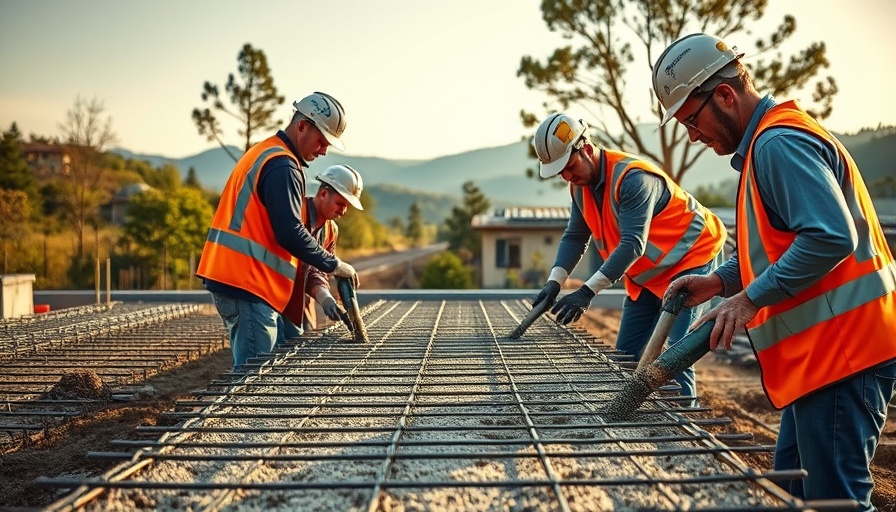
Revolutionizing Bridges: The Promise of Stainless-Bonded Rebar
In a transformative step for the construction industry, stainless-bonded rebar has made its debut in a Caltrans bridge project. This innovative material is engineered not only to enhance structural integrity but also to resist corrosion over time. This quality is increasingly vital in regions susceptible to harsh environmental conditions, like those that experience high levels of moisture or saline exposure. But while manufacturers tout the longevity of stainless-bonded rebar, the industry remains cautious, with questions about durability still lingering.
Why Durability Matters in Modern Construction
Durability in materials plays a pivotal role in the lifecycle of a structure, impacting everything from maintenance costs to overall safety standards. In project management, understanding the long-term implications of materials means fewer unplanned expenditures and risks over time. As clients of commercial construction firms seek the best options for efficiency and cost management, the adoption of more resilient materials such as stainless-bonded rebar can pave the way for sustainable building practices. Early adopters are taking a calculated risk, hoping to determine whether this new technology can truly stand the test of time.
The Technology Behind Stainless Bonding
Stainless-bonded rebar is created through an innovative manufacturing process that integrates stainless-steel fibers into a standard rebar design. This hybrid approach aims to combine the strength of conventional steel with the anti-corrosive properties of stainless steel. This fusion results in a product that holds the promise of extensive durability, particularly in settings where traditional rebar might falter due to atmospheric conditions or exposure to chemicals. Yet, the true test lies in its performance over time. Investors in this technology need to consider both the initial costs and the potential long-term savings that might offset them.
What the Experts Are Saying
Experts across the construction sector note that while the promise of stainless-bonded rebar is compelling, further studies and real-world applications are essential to validate durability claims. The challenge lies in managing expectations; yes, the material is intriguing, but true longevity and cost-effectiveness require rigorous testing. Construction companies looking to innovate must weigh the potential benefits against the unknowns of durability outcomes.
Future Trends: A Shift Towards Reliable Materials
The emergence of stainless-bonded rebar hints at a broader trend in construction—a shift towards utilizing more advanced materials that bolster longevity and sustainability. With increasing emphasis on building methods that mitigate long-term costs, technologies like stainless-bonded rebar could significantly impact project scopes. The construction industry thrives on innovation, and as more companies explore such technologies, we may see a paradigm shift that redefines industry standards across the board.
A Call to Action for Conscious Construction Practices
As the construction landscape evolves, stakeholders are encouraged to remain informed about the latest advancements and innovations. Emphasizing materials that promise durability and sustainability not only influences project outcomes but also contributes to a more responsible construction industry. For contractors, engineers, and clients alike, staying ahead of trends can usher in techniques that are not just innovative but effective.
 Add Row
Add Row  Add
Add 




Write A Comment